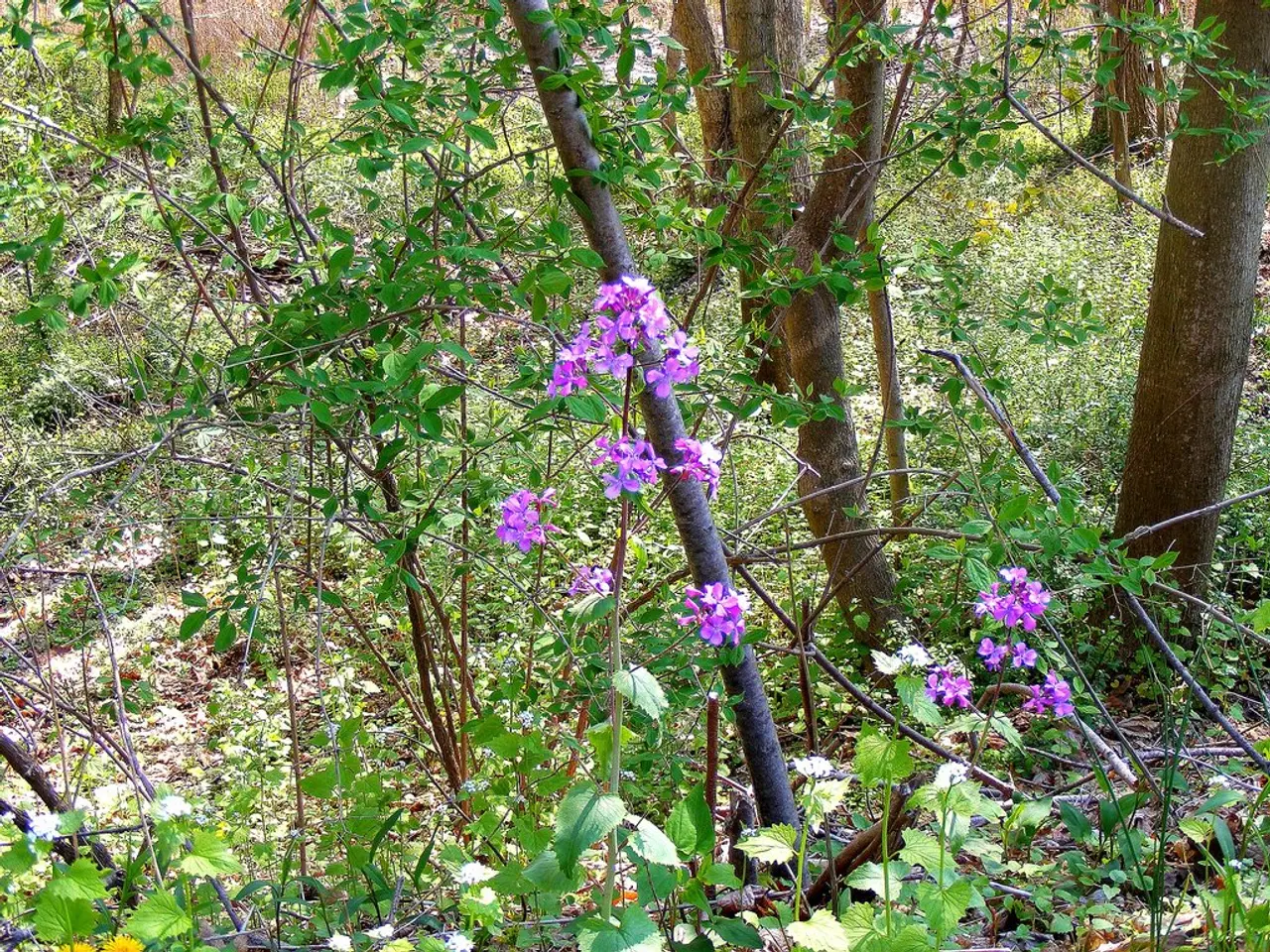Transform a Thriving Habitat for Pollinators with These 6 Indigenous Flowering Shrubs
In an effort to support the dwindling pollinator population, consider incorporating these native flowering shrubs into your garden. These shrubs, including Winterberry, Serviceberry, Summersweet, Apache Plume, Rubber Rabbitbrush, and Common Buttonbush, offer unique benefits due to their flower characteristics and bloom times, collectively extending pollinator support throughout the growing season.
Winterberry (Ilex verticillata)
A native deciduous holly, Winterberry produces small flowers in spring that attract bees and other pollinators. Though the flowers are not showy, they provide an important nectar source early in the season. The shrub's bright red berries also support birds later in the year, indirectly benefiting pollinator habitat.
Serviceberry (Amelanchier spp.)
Known for its early spring white blossoms, Serviceberry is a key early-season nectar and pollen source for native bees and butterflies. Its fruit, which is purple, is also enjoyed by birds.
Summersweet (Clethra alnifolia)
Summersweet is a fragrant shrub with spike-like clusters of white to pink flowers blooming in mid to late summer. Attracting a wide variety of pollinators including bees, butterflies, and hummingbirds, it thrives in moist soils and provides nectar when some other flowers may be declining.
Apache Plume (Fallugia paradoxa)
Apache Plume produces small, white to cream flowers that attract native bees and butterflies. Its feathery seed plumes add ornamental value after flowering. Drought tolerant and suited for dry environments, it supports pollinators adapted to these conditions.
Rubber Rabbitbrush (Ericameria nauseosa)
Blooming in late summer to fall, Rubber Rabbitbrush is important for pollinators like native bees and butterflies when fewer floral resources are available. Its bright yellow flowers provide nectar at a critical time, especially in western and arid regions.
Common Buttonbush (Cephalanthus occidentalis)
This shrub’s spherical, fragrant flower heads bloom in summer and attract diverse pollinators such as bees and butterflies. It prefers wet soils and is excellent for riparian or wetland gardens, supporting pollinators in those habitats.
In summary, these shrubs offer nectar and pollen resources essential for native bees, butterflies, and other beneficial insects. For maximizing pollinator benefits, plant these shrubs in ecological groupings and alongside native wildflowers and perennials noted for pollinator attraction such as Joe-Pye weed, goldenrods, and coneflowers. This diversity provides continuous bloom and floral resources to sustain a broad range of North America's native pollinators.
Buttonbush, for instance, grows up to eight feet tall and wide and has round, golf ball-sized white flowers that are a great draw for pollinators. Apache Plume, on the other hand, needs a location with full sun and can tolerate dry soil. Serviceberry is a native to the eastern US that can be grown as a large shrub or small, multi-stemmed tree. It provides spring flowers, purple fruit, and fall foliage, and is loved by pollinators and birds. It grows best in slightly acidic, well-drained soil and a spot with full sun, and can reach up to 25 feet tall.
Rubber Rabbitbrush's flowers are yellow, small, tubular, and grow in clusters. It has gray-green threadlike leaves and fall flowers that feed pollinators after many plants stop blooming. Native to most of the western United States, it is related to sagebrush and can grow up to five feet tall.
By incorporating these pollinator-friendly native shrubs into your garden, you not only support local wildlife but also create an easy, environmentally friendly, and sustainable way to garden. Buttonbush is a good option for wet areas of the garden, as it grows naturally in marshes and bogs.
- For a thriving home-and-garden that supports local pollinators, consider planting Winterberry, Serviceberry, Summersweet, Apache Plume, Rubber Rabbitbrush, and Common Buttonbush, as they each offer unique flower characteristics and bloom times, collectively extending pollinator support throughout the growing season.
- Incorporating these native flowering shrubs into your home-and-garden lifestyle not only contributes to the conservation of dwindling pollinator populations but also contributes to a more colorful and lively home-and-garden, with various shrubs blooming from early spring to late fall.




